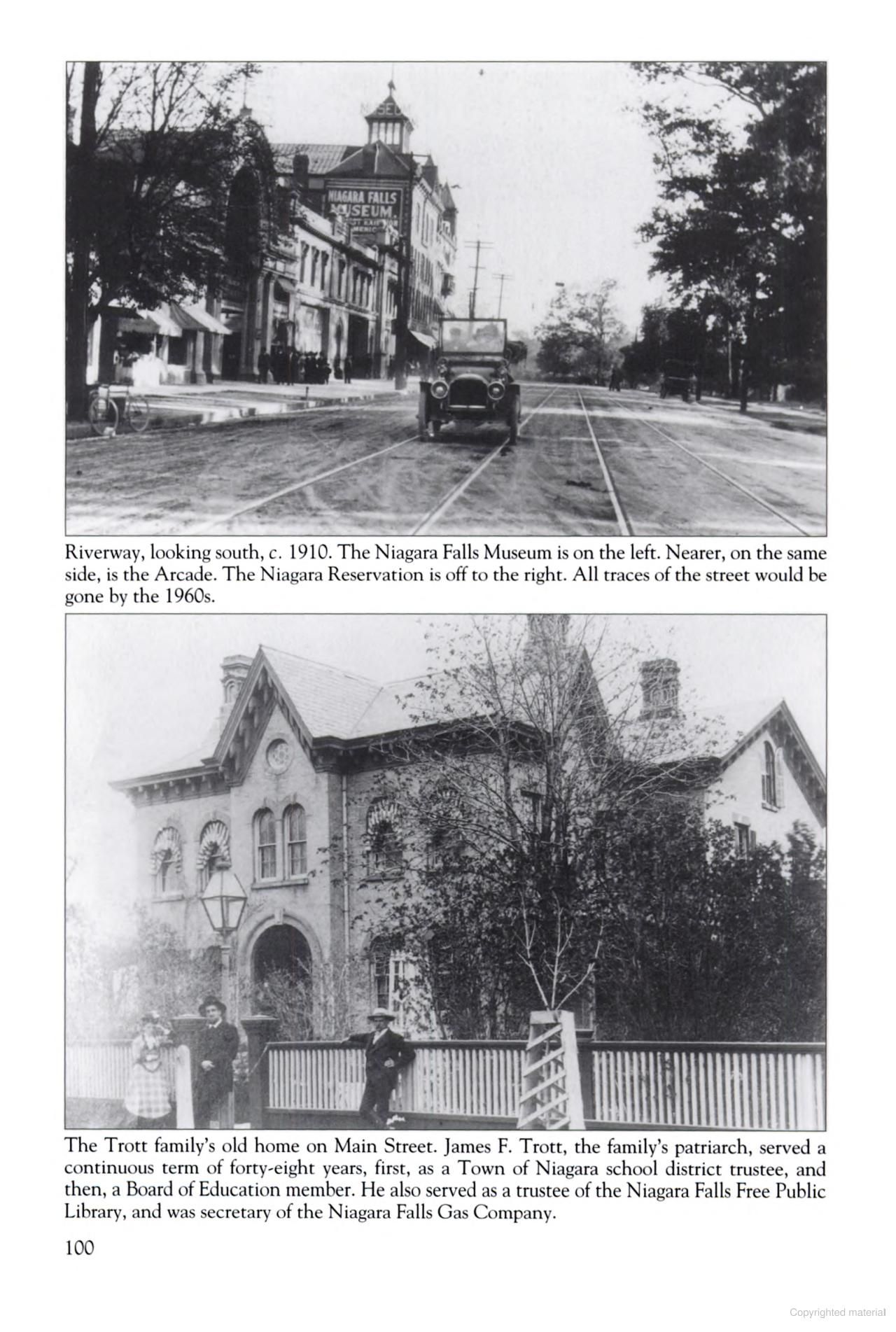Whitney-Trott House
The Whitney-Trott house in Niagara Falls is steeped in history related to the Underground Railroad, commercial farming, and much more.
The Whitneys and Trotts were two of the most important families in the early development of Niagara Falls, New York. Related by marriage, and influenced by the vast promise of the Falls, the two families “were practical entrepreneurs, builders, and consummate hosts.”
General Parkhurst Whitney, and later his daughter and son-in-law Celinda and James Trott, owned the Cataract House. It was a grand hotel with a large black workforce. The two families’ hiring of black waiters, and the waiters’ heroic efforts to help free enslaved people, combined to make the Cataract House a major stop on the Underground Railroad.
In 1849, the Trott family moved two miles north from the Cataract House to live with Celinda’s parents on their farm. The Whitney-Trott House was located at 1139 Main Street on the corner of Chilton Avenue. There was a working farm, complete with “a large barn, stable, pigsty, chicken house, and machine shop.” To the west, stood the Whitney apple orchard and potato fields, and to the east the Whitney pear orchard. To the south, onlookers “could see the mist rising from Niagara Falls.”
The original house burned down in 1860, destroying the families’ “extensive library and Whitney’s collection of military artifacts.” A year later, they built a new, two-story house on the same property. It was a stately, yellow brick house with large Romanesque windows and a gabled attic. “The house [had] six bedrooms, a large hall, a spacious library and an elegant dining room.” Only two homes in Niagara Falls had the luxury of two bathrooms, and this was one of them! “People called the place ‘Rose Lawn,’ because roses and lilacs filled the front yard, enclosed by a boxwood hedge.”
The Whitney-Trott homestead was “the center of the largest commercial farm in the Town of Niagara.” As a supplier for the Cataract House, James Trott likely provided the hotel kitchen with produce from the family farm. A man of many talents, Trott also helped establish the Niagara Falls public library and school systems. Celinda Trott named the Maid of the Mist, a now-famous tourist attraction in Niagara Falls; she is also one of the three women for whom nearby Three Sisters Islands is named.
By the 1890s, James Trott was facing pressure to develop the farm and began selling it. “In 1895, Chilton Avenue became the first paved street in Niagara Falls.” Celinda and James “continued to live in the family home until their deaths” in 1892 and 1898, respectively. Their children inherited the home. The Kellogg Motor Company purchased it in 1927.
In 1949, the company demolished the house and built a used car lot on the site. Today, the site is part of the Chilton Avenue-Orchard Parkway Historic District. The Whitney-Trott house and its inhabitants are part of this history. We can only imagine what stories were told within its walls.
Hope L. Russell, Ph.D.


